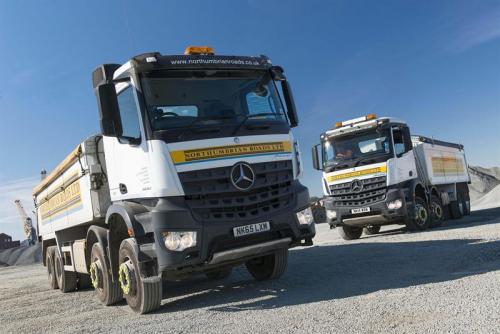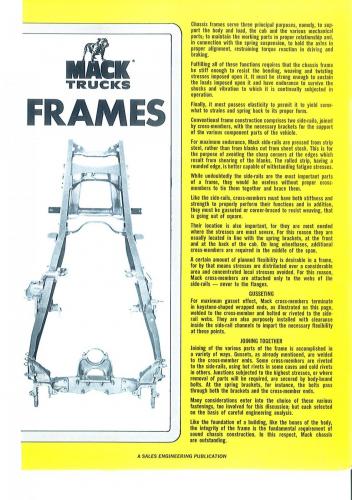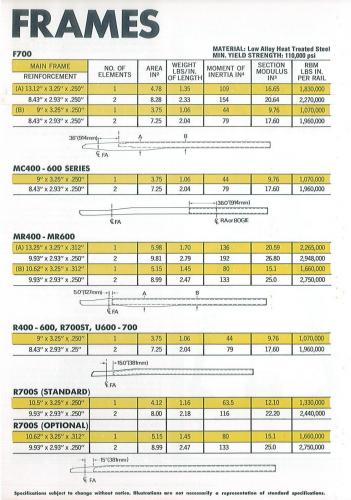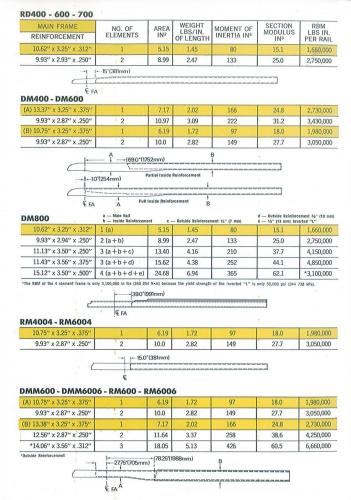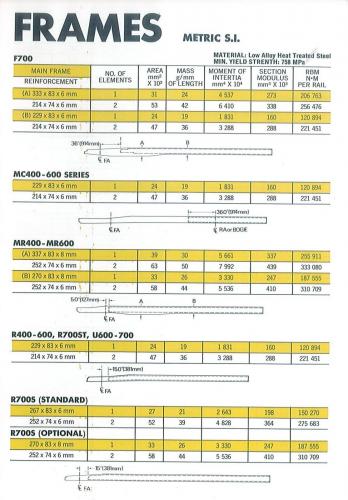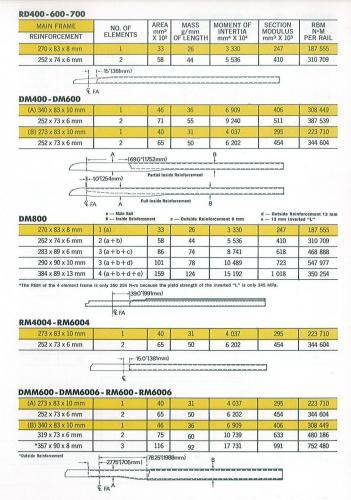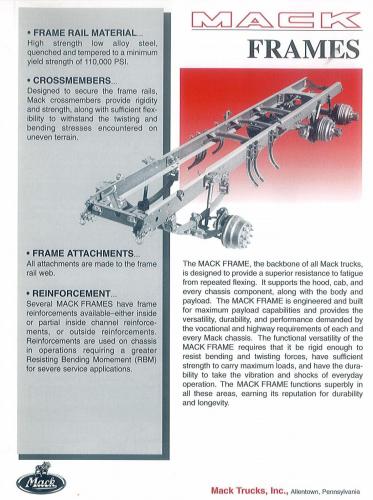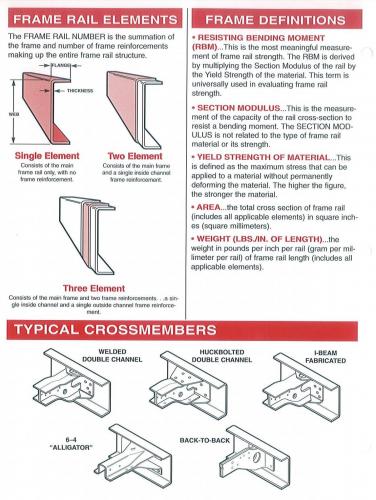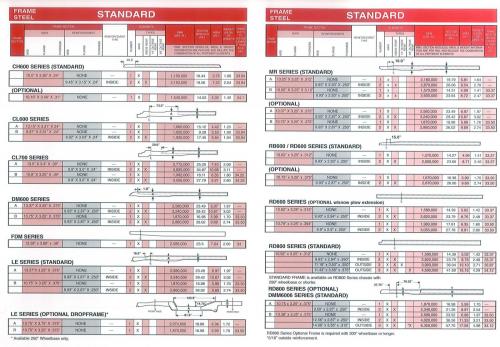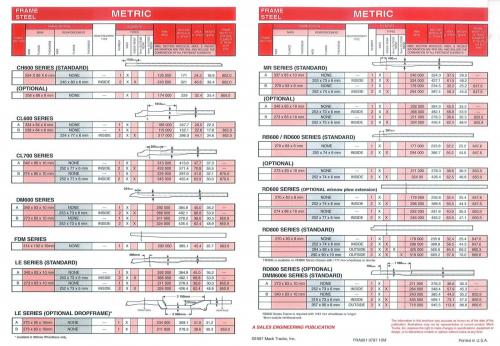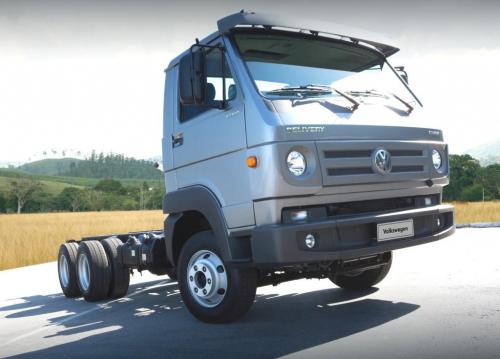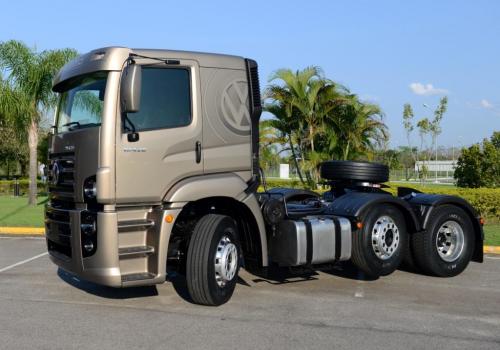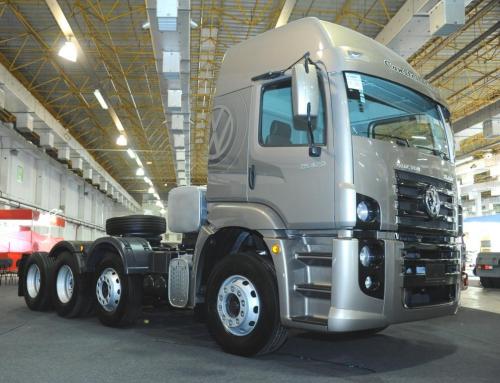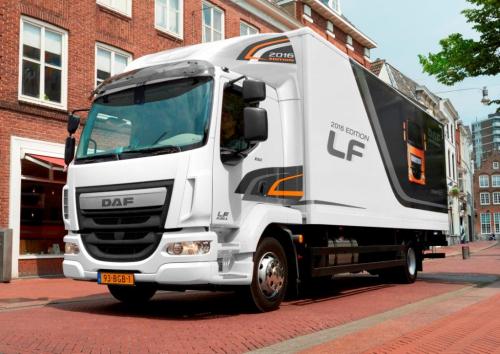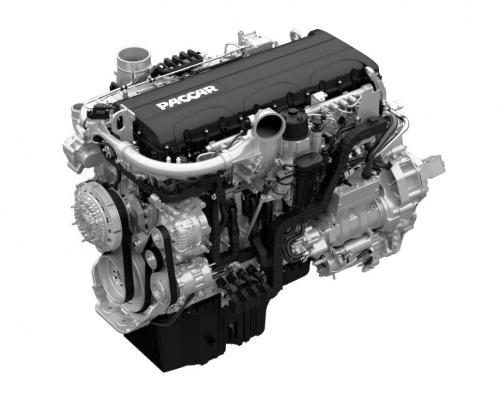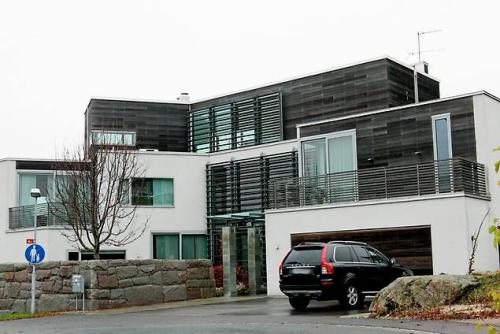
kscarbel2
Moderator-
Posts
18,886 -
Joined
-
Days Won
114
Content Type
Profiles
Forums
Gallery
Events
Blogs
BMT Wiki
Collections
Store
Everything posted by kscarbel2
-
Mother murders 10-month-old son Associated Press / October 6, 2015 A Fort Worth woman who first said that her 10-month-old son died last year after falling off a bed is now accused in his death after confessing to investigators. Shakira Bickerstaff, 23, was arrested Tuesday afternoon in Arlington on a capital murder warrant after admitting she shook her infant son, Lamont, hit his head on a table and then covered his mouth to get him to stop crying, according to an arrest warrant affidavit. Bail was set at $1 million. Emergency crews were called to Bickerstaff’s residence in the 2200 block of Amanda Avenue about 11:30 p.m. Aug. 19, 2014, after Bickerstaff’s boyfriend discovered the baby unresponsive on the couch. Lamont, who had what appeared to be numerous abrasions, scars and bruising on his body, was pronounced dead at the scene. Bickerstaff initially told police that she had put Lamont on the couch about 8 p.m. after bottle feeding him. She said she didn’t know how her son died but mentioned that he was always falling off the bed, Detective W.S. Adams wrote in the affidavit. In an interview two days later, Bickerstaff told Adams that Lamont had fallen off the bed and hit his head earlier in the evening after she went to throw away some diapers. She said she returned to find him whining with his left arm behind his back. She said he had also been hit in the mouth with a toy. “Shakira said she didn’t do anything to him, and that she didn’t see the obvious bruising, scratches, and scars on Lamont’s face,” wrote Adams, who works in the Crimes Against Children Unit. Bickerstaff’s boyfriend told police that he didn’t want to blame Bickerstaff for hurting Lamont but that he had seen her be angry and rough with the boy. The boyfriend told police that Shakira would complain about Lamont’s crying and how she didn’t want a son and had planned to give him up for adoption when he was born, the affidavit states. Bickerstaff’s confession In May, after extensive tests, the Tarrant County medical examiner’s office ruled Lamont’s death a homicide caused by “battered infant syndrome.” Bickerstaff agreed to be interviewed by Adams again on Oct. 1 to go over Lamont’s injuries, including a fractured skull, bleeding on the brain and bruised face. Bickerstaff gave varying accounts of what she thought might have happened to her son before she finally confessed, telling the detective that she had shaken her daughter, 2 at the time, who walked away dizzy. Bickerstaff said she stopped when Lamont began crying but then began to shake him again. “Shakira said that she shook him harder, and struck the back of his head on the table located in front of the couch,” Adams wrote. Asked to demonstrate how hard she hit Lamont’s head on the table, Bickerstaff tried to duplicate the hit using the doll. “She hit the doll’s head numerous times on the table, and said that she couldn’t hit the table as hard as she did with Lamont’s head, because the doll was plastic,” Adams wrote. Confronted with the fact that bruising on the boy’s face would not be caused by light tapping, Bickerstaff acknowledged holding her hand over Lamont’s mouth. Bickerstaff said that after Lamont began to “drift away,” she laid him on the couch with a pillow on top of his head because he liked it dark. Asked if she believed she ultimately caused his death, Bickerstaff told the detective she thought that her shaking had killed him. Since Lamont’s death, Bickerstaff has given birth to another child, which CPS placed in foster care. A court then placed that child in the care of a relative.
-
Woman sentenced to 8 years for murdering 3-week-old newborn Associated Press / September 10, 2015 A 23-year-old New Britain, Connecticut woman who was charged with manslaughter in connection with the death of a friend's infant daughter was sentenced to eight years in prison Thursday. Janell Campbell previously entered no-contest pleas to charges of second-degree manslaughter and risk of injury to a child. Campbell and her young son were at the baby's house and stayed into the early hours of Dec. 5. Campbell and the baby's mother were friends, and the warrant says they had been drinking alcohol at the house with another friend that night. At some point, Quintero's mother left Campbell with the children while she and the other friend went to the store, the warrant says. The child's mother told police that she left her daughter with Campbell for 15 minutes, and that when she returned, Campbell came out of the bedroom holding her unresponsive child. The child's mother told police that when she questioned Campbell about what had happened, Campbell would not respond and only said, "I'm so sorry, I'm so sorry." Campbell told police that she was "very drunk" and that the child "slipped out of her hands onto the floor." She told police she then picked up the child and laid down with her on the bed, but did not check her for injuries. "Campbell stated that she didn't know why she didn't check the victim after she hit the floor and that was stupid." Police who went to the infant's home found an empty 24 pack of beer, two empty bottles of tequila and part of a marijuana cigarette in the kitchen. A doctor at Connecticut Children's Medical Center told police that the child's skull had been shattered by blunt force trauma with compression. An examination by the medical examiner's office showed that the child's injuries were consistent with being dropped and then fallen on, the warrant says. The baby, identified by family members at a previous court hearing as Jaleah Jayde Quintero, was 3 weeks old.
-
Third Cleveland child killed in recent weeks Associated Press / October 2, 2015 A 5-month-old girl who was shot in the chest on Thursday has died, according to police in Cleveland, Ohio. The death of Aavielle Wakefield marks the third fatal shooting incident involving children on Cleveland's east side in the last month. Wakefield was in a car with her mother and two males when someone opened fire into the car. On September 4, 5-year-old Ramon Burnett was killed in a drive-by shooting outside his home. On September 15, 3-year-old Major Howard was gunned down inside a car. In addition, on September 19, 10-year-old Dante Padgett Jr. was shot and wounded in a car while his father was killed. In a call to 911, a woman told the dispatcher that "someone was shooting at our car and they shot the baby.". Wakefield was brought to Rainbow Babies & Children's Hospital, where she was pronounced dead. Cleveland police said they do not have a suspect or even a description of the shooter or shooters at this point. This should not be happening in our city," said an emotional Cleveland police chief Calvin Williams. “Another innocent child in our city has been taken from us, basically by thugs in the street who want to carry out this vendetta against each other,” Williams added on Thursday. “Our innocent babies get caught in the crossfire. It’s enough. Enough is enough. When are we going to stop counting babies killed out there.” Cleveland police detective Rhonda Gray said Friday that the citizens of Cleveland must step up to help find those responsible. "It's time for Cleveland to speak up," she told reporters after recounting her previous evening comforting Aavielle's distraught mother. "There are people who know what happened. There are people who saw what happened. There are people who heard what happened. And it's time for them to speak up. They can call me personally in the homicide unit." The Cuyahoga County Prosecutor's Office has offered a $25,000 reward for information that will lead to the arrest of those responsible for Wakefield and Padgett's shootings. Accidental shootings took the lives of at least 100 children across the US in the year following the Sandy Hook Elementary School massacre in December 2012, a report found in June 2014. A study published in January 2014 found that about 7,000 children ages 19 and younger were hospitalized or killed due to gun violence each year, while 3,000 per year die from a gunshot before making it to a hospital. Ohio's infant mortality rate, meanwhile, is one of the highest in the United States. For African-Americans, Ohio ranks the worst for infant deaths among all US states, according to a report released last year by the Ohio Department of Health. The state's overall infant mortality rate ‒ 7.4 deaths per 1,000 live births ‒ is 23 percent higher than the national rate. Cleveland was the site of a police shooting that killed 12-year-old Tamir Rice in November 2014. Rice was at a recreation center park, playing with a toy handgun designed to look like a real firearm. The toy gun lacked the orange safety feature visualization to show that it was, in fact, a fake. When two police officers responded to the scene, one fired almost immediately at Rice, who was black, fatally wounding him.
-
Bronx mother tosses newborn baby out 7th floor window Associated Press / September 30, 2015 A Bronx newborn didn’t live long enough to get a name — or a chance. The helpless baby girl, minutes after drawing her first breath and still alive, was tossed to her death from a seventh-floor Bronx apartment window by her mother, police and prosecutors said. The dead infant’s umbilical cord was still attached. Jennifer Berry, age 33, was charged with second-degree murder and manslaughter after an autopsy determined the death was a homicide caused by multiple blunt-force trauma. Berry told police the baby was delivered inside the apartment shower. The baby’s father was in the apartment when the killing occurred. Giovanni Johnson, 28, said “I didn’t know (about the pregnancy).” He told police Berry had been pregnant months ago, but she told him she had had an abortion.
-
Transport Engineer / October 8, 2015 North-East highways contractor Northumbrian Roads has commissioned another three Mercedes-Benz 8x4 Arocs 3240 tippers with insulated aluminium tipping bodies from Weightlifter Bodies (http://weightlifterbodies.com/). This is the seventh construction chassised Arocs for the Prudhoe-based operator, which took delivery of its first Arocs from Newcastle upon Tyne Mercedes dealer Bell Truck & Van early in 2014. “We quickly realised that the Arocs is ideally suited to meet the demands of our job,” recalls transport manager Stephen Atkinson. “The chassis is robust, but not heavy, while the elevated ride height means minor damage to items like lights and steps are less of a problem than with some other vehicles.” Bell Truck & Van then supplied an ex-demonstrator followed by two more Arocs 8x4 trucks last year – all of which were powered by Mercedes 394bhp 10.7-litre engines driving through PowerShift 3 AMTs (automated manual transmissions). “I’ve received some very positive reports from our drivers on the Arocs’ cab comfort and general ease of use,” continues Atkinson. “They particularly like the PowerShift transmission, which makes negotiating busy urban streets much easier.” Atkinson says his trucks don’t travel great distances so fuel consumption, although important, is not the prime consideration. “By far the most important attribute of any truck for us, is reliability,” he says. Our vehicles must be available for work when we need them, and the Arocs have certainly proved themselves in this respect.” .
-
Land Line / October 9, 2015 The National Highway Traffic Safety Administration is seeking input from truckers who may have experienced excessive cab sway or lean in late-model Volvo VNL 780 vehicles that may be contributing to driver fatigue and injury or to loss of vehicle control. On Sept. 28, NHTSA’s Office of Defects Investigation responded to a petition for an assessment. According to ODI’s summary, three complaints received by the agency claimed both driver fatigue and loss of control due to the swaying of the cab. One driver claimed the sway was so pronounced it activated the truck’s crash avoidance system while rounding a corner on a four-lane divided highway at a speed of 40 mph. The summary states that in all cases, claims of cab sway were evident from the first day of use. Nate Seymour, a safety defect engineer with NHTSA, said the agency is in an information-gathering stage right now, and is seeking input from both Volvo engineers and other drivers who may have complaints similar to the ones reported. “At this point our question is to gather some information,” Seymour said in a phone interview with Land Line. “If it looks like it warrants an investigation, we’ll grant it. If it looks like there isn’t a reason to go forward, we’ll deny the petition and that will be the end of it.” The assessment was prompted by a petition from OOIDA Members Albert and Nancy Cusson. The Kathleen, Fla.-based couple spoke repeatedly with Land Line and said they thought they were getting the truck of their dreams when they purchased a 2015 Volvo VNL 780 last year. Instead, the couple say the truck has been more like a nightmare due to what they describe as a severe cab sway that makes driving the rig difficult and riding in the sleeper berth almost impossible. Within the first year of owning the truck, the Cussons said they estimate they’ve been down for at least four out of 12 months while they’ve attempted numerous fixes, including realigning the cab and replacing the shocks on more than one occasion. They say the repairs offer temporary fixes, but both the front-to-back and lateral movement of the cab continues to reappear, often worse than before. They say the uncontrollable rolling motion of the cab makes handling the tractor, particularly in poor weather or on poor road conditions, extremely difficult and could cause a crash. They also claim the physical toll from the bouncing and rolling has led to them feeling fatigued and injured. “Physically, this truck is killing us. It’s just killing us,” Nancy said. “We’re just really tired and really in a lot of pain. I don’t know what else to do. I have a truck payment to make, I have insurance payments to make, and I have to stay in this truck. And it’s killing us.” The Cussons run team as a drop-deck trailer operation hauling primarily specialty and oversized loads. Albert said when they initially went to Volvo to purchase the new truck, he ordered it to be set up with a 248-inch wheel base, VEC and VEST safety packages, and a variety of lighting accoutrements. “You can’t sleep in the truck without being beat or tossed around in the sleeper,” Albert said. “We can’t afford that. Number one, I’m 60-years-old and when you get a beating in the sleeper, it’s like being in a fight. I’d rather get in the ring with a boxer before I sleep in the truck.” The couple admit that Volvo even offered to buy the truck back from them at one point, but they say they’re not OK with that. “If they buy the truck back, they could probably stop us from buying another Volvo.” Albert said. “The problem is, I got everything on this truck that I want on a truck. I finally got it set up the way it needs to be set up. … When I bought the truck, I ordered it in specific colors; I ordered it a specific length. I ordered it with special stuff on this truck to handle the type of driving that I do. …That all took time. That took six weeks to set this truck up. I’m not ready to do it again.” The relationship between the Cussons and Volvo has gotten more acrimonious as the problems have persisted. They are currently suing the truck manufacturer in Texas under the state’s Lemon Law. “We want our Volvo,” Nancy said. “We love our Volvo. It has everything we want. It is superior in every way to any other truck that’s out there. But it has this one problem. All we’ve ever wanted was Volvo to work for us. We didn’t want to have to go file under the Lemon Law. … We didn’t want to have to do all that.” For its part, Volvo spokesman John Mies said the nation’s largest commercial truck maker takes customer feedback “very seriously,” and has followed up individually with customers who’ve complained about “perceived ‘cab sway.’” “We also conducted a thorough investigation of this issue, and to the best of our knowledge, there is no product quality or safety concern. Rather, we believe that in the instances we’re aware of, the issue has been a matter of customer ride preference,” Mies said in an email to Land Line. Mies said Volvo will offer “our full support to the agency.” “Our expectation is that when NHTSA has all the facts, it will conclude that there is no product quality or safety concern,” Mies stated. The ODI petition states that the agency identified Early Warning Reporting field reports on 2013-2016 Volvo trucks in which there are concerns about cab lean, but the petition states that those issues have yet to be verified as related to the allegations in the petition. NHTSA’s Seymour said there are three ways for Volvo truck drivers to report similar issues or concerns: via online submission form at the agency’s safercar.gov website; by calling the agency’s hotline at 888-327-4236; or by printing out a complaint form on the agency’s website, filling it out and mailing, or faxing it in. “(Those submissions) help us make a determination one way or another,” Seymour said. “What sometimes gets lost is just because one person experiences (an issue with a vehicle) doesn’t mean it’s not an unreasonable risk to highway safety. When it becomes multiple vehicles experiencing the same thing, and it becomes a hazardous condition, then that becomes something our agency is really designed to address.”
-
Freightliner reveals new transporter for V8 racing team
kscarbel2 replied to kscarbel2's topic in Trucking News
-
Today's Trucking / October 9, 2015 There can't be anyone on the planet who hasn't read or heard at least a few hundred words on the Volkswagen diesel emissions fiasco. But get ready for a few more because this is a story that goes way beyond a very tall company stooping very low to cheat. And it's certainly not just about cars. For anyone who's been living under a rock, here's a brief recap: Volkswagen's 2.0-liter 'TDI' diesel engine used in several Volkswagen models sold here since 2009, along with the Audi A3, plus VW brands Skoda and Seat sold mainly in Europe, benefitted from clever engine-management software. Clever in the sense that it produced a certain emissions performance under test conditions but opened the floodgates in ordinary driving conditions and let loose anywhere from 10 to 40 times the NOx allowed by the rules, along with other pollutants at non-compliant levels. That's how VW TDI owners have been able to brag about their 50-mpg cars. Thing is, you can't limit NOx and particulates and get great fuel economy at the same time. Those of us in trucking know that only too well. The worst part of the story is that this deception -- of the EPA and other such institutions elsewhere, car buyers, and its own dealers -- was deliberate. Volkswagen has admitted this. Truly, it's an extraordinary tale of corporate malfeasance the likes of which we've never seen. The arrogance is astonishing. It remains to be seen what the company will do about it, but the German government has demanded an answer to that one this week. Among the possible fixes is a recall and subsequent re-programming of every diesel VW out there. And the question then becomes, will the driveability of these 'fixed' cars be tolerable? Some 100,000 cars are affected in Canada, almost 500,000 in the U.S., and about 11 million worldwide. And that's not to mention 2.1 million VW light and light-medium commercial trucks sold all over the place with the same diesel engine. Although other European manufacturers of diesel cars are now under scrutiny, none of them is implicated in a similar deception. In the U.S., and presumably in Canada, Volkswagen will face unprecedented fines, and more than a few class-action lawsuits have already been launched. A criminal investigation has been initiated by the German government but that's not on the American horizon because the country's Clean Air Act does not allow for criminal charges. Some observers have questioned whether Volkswagen can survive this mess, its stock price having lost about a third of its value since the news broke and with more trouble to come. It's a very rich company but it may not be rich enough. Estimates of the costs it may face reach as high as US$100 billion. The various other story lines in here include one about the legitimacy of the U.S. EPA. The Environmental Protection Agency may well have proven itself to be pretty incompetent here. Always a political body, never a scientific or technical one, it knew about Volkswagen's cheating in May of 2014, yet it did nothing. It chose instead to accept the German giant's version of things and its unkept promise to fix things. VW stonewalled the EPA perfectly for 16 months. This didn't come to the attention of the larger public until a couple of weeks back when the EPA issued a Notice of Violation and banned the sale of 2016-model VW diesels. Then all hell broke loose. But it wasn't even the EPA that uncovered the deceit. Rather it was a little non-profit environmental group in California that got curious last year, having heard that European authorities were sniffing around VW's emissions claims. To see for themselves they took a VW Jetta and Passat, plus a BMW X3, all with diesel power, on a few long highway cruises. Finding outrageous emissions from the VWs, but not the BMW, they then went to the lab at West Virginia University's Center for Alternative Fuels, Engines and Emissions which confirmed the worst. There are parallels of a sort with trucking's emissions difficulties that led to the so-called 'Consent Decree' in 1998. The U.S. Department of Justice charged heavy-duty engine makers with using a 'defeat device' as defined by the Clean Air Act, not unlike the one in the news today. But actually quite different in practice. The engine folks never admitted guilt, signing the consent decree agreement in order to take their lumps, pay US$83 million in fines, and move on, but in any case I believe it was really EPA's crude testing procedures and imprecise rule-making that were at fault. That plus what I've heard called the enviro-zealotry of its chief at the time, Carol Browner. For all intents and purposes, she and her organization threw our favorite engine-makers under the bus -- in an election year. EPA's test procedures back then were markedly out of date, set up for carburetion and mechanical fuel injection, not the increasingly sophisticated electronic controls that were in use on big diesels by then. In 1998 those controls could change the timing and the amount of fuel to be injected almost infinitely in response to any number of inputs. So it was quite feasible to set the ECU to meet the NOx limit on the EPA’s test cycle, but optimize the engine for fuel consumption and performance under other circumstances. As I understand things, engine makers felt their only legal obligation was to meet the test-cycle standards in order to secure an EPA compliance certificate. And a very well informed source tells me that one truck-maker actually had a letter from an EPA official saying exactly that. There was much anger in the air at the time, with truck and engine people crying foul at pretty high decibel levels, among the most vociferous being Jim Hebe of Freightliner. At least one lawsuit was filed against the EPA, by Mack if I remember correctly, and I believe the chances of winning were actually pretty good. But the EPA countered with its typical bullying, including threats to ban the sale of their engines. Soon the fight was over, truck and engine-makers deciding that discretion was the much better part of valor. Ya can't fight city hall. For their troubles and their imagined sins they were hit with those heavy fines, but the more onerous penalty was that the 2004 EPA emissions mandate was pulled ahead by 15 months to 2002. That cost the industry at the time something like US$820 million, and of course we all know what it cost both manufacturers and truck buyers in the long run. Billions. An interesting parallel in there is that Caterpillar in 2002 and Volkswagen in 2009 chose to go their own ways with emissions-compliance technology. Cat decided not to use exhaust gas recirculation at the time, as all the others had done, but couldn't meet the minimum standards of 2002/2004. They were allowed to continue selling non-compliant engines but paid hefty fines on each one sold. Eventually, of course, the company left the on-highway business altogether. Volkswagen chose to avoid the urea-injection after-treatment approach that was adopted by Mercedes, BMW, and all other diesel car manufacturers, claiming they could use in-cylinder tools instead. We know now that, unlike Cat's honest approach to the problem, VW actually took the path of subterfuge. The way I understand things, back in 2008-09 the company was in cost-cutting mode and was desperate to avoid the extra expense of using urea-based technology -- which would have been something like US$335 per car. Gambling that they could pull off the big lie was obviously not very smart, but it worked for a long time. Enough time to sell millions of cars. Another irony in here is that West Virginia University did the testing on heavy-duty engines back in the late 1990s and early 2000s, just as they did last year on the little TDI diesel. VW’s lousy behavior has also called into further question the trust that many people place in big companies, especially those with a good marketing machine in place to package any awkward deceptions. Being a cynical journalist, I'm happy to see that folks believe less and less in the inherent goodness of the giant enterprises that are so much part of our lives. And lord knows we've seen enough evidence to reinforce our doubts in recent years. There are certainly good and honorable companies out there, even some of the big ones, and the sad thing here is that VW has almost always seemed to be on the side of the angels. Proudly proclaiming its 'green' ambitions and touting its environmentally solid answers, mostly by way of its 'clean diesel' technology, the company's hype was largely successful in recent years. But in many outfits, big and small, the profit motive and the greed of impatient shareholders often trump any executive urge to establish and live by high moral standards. In Volkswagen's case there's an added dimension in that employees, members of the IG Metall trade union, constitute half -- yes, 10 out of 20 -- of the board of directors. So add job protection to the motivations that might be likely to leave high moral standards on the afterthought pile. And get this, on the five-member committee charged with steering the company through this emissions scandal, three of the five are union members, according to an article in the Financial Times. The company's interim chairman is a former IG Metall guy. In fact, VW's corporate governance has by all accounts been a subject of concern for years, its board accused variously of being too narrow, too rigid, too unskilled, too this, and too that. Apparently with good reason. And it's not as if shareholders are likely to change things because only 12% of voting shares are held by outside investors. The company is mostly owned by the Porsche family -- yes, that Porsche, the guy who designed the original Beetle -- with remaining shares in the hands of the German State of Lower Saxony and the government of Qatar. To the average Canadian or American, this is all pretty odd.
-
Looks very much like an ex-Ryder unit, so it might very well have a Dayton 4-spring suspension (a special order option for Ryder). Too bad that wheelbase is so short.
-
Volkswagen Truck & Bus Press Release / September 21, 2015 The leader in the Brazilian truck market, Volkswagen presented a range of new models at the 2015 SAE Brazil Congress, held September 22-24 in Sao Paulo. The truckmaker’s new Constellation series model 19.420 6x2 tractor, featuring a steerable and liftable electronically-controlled wide track pusher axle with single mounted tires, allows for an additional 5,000 kg of payload for a gross combination weight rating of 52 metric tons. The 19.420 is equipped with a Cummins ISL engine rated at 420 horsepower and 1,850 Nm of torque, paired with a 16-speed V-Tronic ZF 16AS2230TD automated manual transmission (AMT). Recognized for versatility and maneuverability, Volkswagen’s Delivery light truck series sees the arrival of the new range-topping model 13.160 featuring a V-Tronic automated manual transmission (AMT) and factory-installed liftable tag axle. With a gross.vehicle weight of 13 metric tons, the 13.160 is had the carrying capacity of a medium truck at a light truck price, while the factory-installed auxiliary tag axle provides the flexibility required by São Paulo operators for compliance with urban freight vehicles (VUC) legislation. The new 13.160 is powered by a 160 horsepower Cummins ISF mated to a 6-speed V-Tronic ZF 6S1010B0 automated manual transmission (AMT). The star of the event was the new Volkswagen Constellation series model 25.420 8x2 tractor, a serious heavy hauler featuring a steerable and liftable electronically-controlled wide track pusher axle with single mounted tires, combined with a liftable electronically-controlled narrow track tag axle with dual-mounted tires. The 25.420 8x2 is powered by a 420 horsepower Cummins ISL engine rated at 420 horsepower and 1,850 Nm of torque, connected to a 16-speed V-Tronic ZF 16AS2230TD automated manual transmission (AMT). .
-
MAN Press Release / October 8, 2015 Between 8 and 10 October 2015, MAN Truck & Bus will be demonstrating its wide range of construction and heavy-duty vehicles, as well as its extensive expertise in these fields, live at the off-road park in Langenaltheim, Germany. Vehicle highlights at the MAN Traction Days 2015 MAN will be showcasing some 50 vehicles from its construction and heavy-duty transportation portfolio at this year's Traction Days, with the following amongst the main attractions at the event: MAN TGX vehicles with the D38 engine and MAN TipMatic TX gearboxTGS vehicles with HydroDrive and 4x4H, 6x6H and 8x6H axle configurations All-wheel drive vehicles in the TGM and TGS model ranges with 4x4, 6x6, 8x6 and 8x8 axle configurations.MAN has divided the grounds at the Langenaltheim off-road park up into several stations: Station 1: MAN will be offering guests the chance to go for a ride around the off-road circuit in a range of all-wheel drive vehicles from the TGM and TGS model ranges.Station 2: At this station the focus is on all things MAN HydroDrive. Guests can take TGS vehicles with HydroDrive and 4x4H, 6x6H and 8x6H axle configurations for a test drive around the off-road circuit.Station 3: Fans of all-wheel drive vehicles won't be disappointed at this station, where rear tippers, three-way tippers and crane tippers can be put to the test to see how they cope on challenging off-road terrain.Station 4: This station is the place to put vehicles with 6x4 and 8x4 axle configurations through their paces on the off-road circuit.Station 5: Here, eight different MAN TGX models with low loader trailers or tipper semitrailers can be driven on the road whilst loaded up.Around 15 further vehicles will also be on display as exhibits, with one particular highlight being the TGX 41.640 8x4/4 BLS heavy-duty semitrailer tractor with 640 hp.Driving experts will also be explaining features, including the turning brakethe hill-climbing brakethe paver brakeFurther information - http://www.corporate.man.eu/en/press-and-media/presscenter/MAN-Traction-Days-2015_-MAN-showcases-its-traction-prowess-with-50-vehicles-from-the-construction-and-heavy-duty-sector--223808.html
-
DAF Press Release / October 6, 2015 DAF is beginning construction of a € 100 million investment in a new, environmentally friendly cab paint factory in Westerlo, Belgium. The company is also investing to further increase capacity and efficiency of DAF’s state-of-the-art production facilities. At the Amsterdam BedrijfsautoRAI exhibition, DAF will introduce many product innovations that will assist DAF customers to lower their operating costs. “The European above 16 ton truck market through August 2015 was up 20% compared to the same period last year. DAF is increasing production to record rates at its Eindhoven truck assembly factory in the fourth quarter to meet customer demand," commented Harrie Schippers, DAF Trucks president. “I’m proud of DAF’s 10,000 employees who are producing the award winning DAF XF, CF and LF vehicles and supporting our customers on a global basis with excellent Paccar parts programs and Paccar Financial services. The ongoing investments in new production technologies will support DAF’s future growth. We are pleased that the versatile DAF CF series will begin local assembly in Brazil. This vehicle offers enhanced sales opportunities in South America to complement the DAF XF in the marketplace. In addition DAF continues to be the market leader in Taiwan.” DAF’s modern Euro 6 product range is on display at the Amsterdam BedrijfsautoRAI exhibition, which will take place from October 20 - 24, 2015. As part of the ‘DAF Transport Efficiency’ philosophy DAF is introducing the new LF 2016 Edition . The new LF 2016 Edition features many enhancements to the 4.5 liter Paccar PX-5 engine (aka.Cummins ISB), resulting in up to 5% better fuel efficiency. A new 12-speed ZF AS Tronic automated gearbox, longer wheel base options and enhanced fuel tank configurations contribute to the highest vehicle efficiency. In addition, a new aero package results in 4% better fuel efficiency, while advanced technologies such as Lane Departure Warning System, Advanced Emergency Braking System, Forward Collision Warning and Adaptive Cruise Control add to enhanced comfort and safety. “The new industry-leading products and services at the BedrijfsautoRAI exhibition reflect DAF’s ongoing investments to further enhance transport efficiency for our customers”, said Richard Zink, DAF sales and marketing director. .
-
Iveco Press Release / October 7, 2015
-
Paccar Launches the DAF MX-11 Engine in North America Paccar Press Release / October 7, 2015 Paccar is expanding its range of self-branded engines in North America with the introduction of the DAF-designed MX-11 engine, with an output of up to 430 HP and 1,550 lb.-ft. of torque. The MX-11, which complements the MX-13 engine, is scheduled to be available with Kenworth and Peterbilt trucks in January 2016. DAF launched the MX-11 engine in Europe in 2013, installing over 10,000 MX-11 engines in DAF trucks in the last two years. “The MX-11 engine is designed to deliver optimum performance and fuel economy, industry-leading durability and reliability, and a quiet operating environment for the driver,” said Landon Sproull, Paccar assistant vice president. “Paccar’s over 50 years of engine development and manufacturing expertise have established the company as one of the leading diesel engine manufacturers in the world.” The 10.8-liter MX-11 engine is characterized by its combination of state-of-the-art innovations and proven technologies that reduce weight and deliver features needed for a wide variety of over the road and vocational applications. The MX-11 engine’s double overhead camshaft design, coupled with a compact graphite iron (CGI) engine block and cylinder head, create long-lasting durability, achieving an industry-leading B10 life of one million miles. The MX-11 utilizes a common rail fuel system with injection pressures of 2,500 bar to optimize combustion and ensure the lowest possible fuel consumption and noise levels. .
-
Los Angeles Times / October 8, 2015 Virginia firm will pay a $100,000 fine and spend $290,000 on pollution-reduction programs for operating 73 trucks in California without diesel particulate filters, federal and state officials announced Thursday. The Environmental Protection Agency’s settlement with Estes Express Lines (https://www.estes-express.com/) was the first federal enforcement action against a company for violating California’s tough regulations to slash emissions of toxic diesel soot and smog-forming pollutants from diesel trucks. “Today we mark the closure of the first of what we hope are many cases,” said Todd Sax, chief of enforcement for the California Air Resources Board, adding that it “sends a strong message that trucking companies, even those based outside of California, must meet California’s requirements when operating here.” The 2008 regulations require heavy-duty diesel trucks either to meet 2010 engine standards or upgrade their vehicles with filters that reduce diesel particulate emissions by 85% or more. The rules, being phased in through 2023, apply to all 1 million diesel trucks operating in California, including 625,000 that are registered out of state. Jared Blumenfeld, the EPA’s regional administrator, said compliance with California’s rules is crucial because diesel trucks are one of the largest sources of smog-forming nitrogen oxide emissions in the state with the worst air quality in the nation. The EPA approved the state’s heavy-duty diesel regulations in 2012, giving the agency the authority to enforce them under the federal Clean Air Act. In the spring of 2014, the agency sent letters to Estes and about a dozen other large, interstate trucking companies requesting information on their compliance with California’s diesel emissions rules, Blumenfeld said. In response, Estes disclosed that about 15% of its 500-truck California fleet was not equipped with particulate filters and that it had failed to verify whether the trucks of subcontractors it had hired were in compliance. The EPA cited Estes, based in Richmond, Virginia, for those violations in February. The company now operates only new trucks in California, the EPA said. As part of its settlement with federal officials, Estes agreed to pay more than $250,000 to help with the replacement of old wood-burning stoves with cleaner devices in the San Joaquin Valley, one of the state’s most polluted regions. The company also will spend $35,000 to fund a UC Davis-run program to teach out-of-state trucking firms about California’s diesel regulations. “We think that's an appropriate use of the penalty and we look forward to a compliant future within California,” said Nick Scola, a spokesman for Estes. The company agrees with the EPA’s findings, he said, and is “working diligently” to meet regulators’ requirements. Blumenfeld said the EPA expects to announce other settlements involving similar emissions violations by large, out-of-state trucking firms in the near future. State air-quality officials estimated last year that about 85% of the trucks operating in California were in compliance with the new diesel rules. California regulators have enforced the diesel regulations as they have begun to take effect in recent years by conducting on-road inspections and other investigations and issuing fines for the companies found in violation. In May, the Air Resources Board fined Bakersfield-based Randy’s Trucking Inc. $524,675, the largest penalty to date, for failing to clean up its fleet in accordance with the regulations. California’s rules for heavy-duty trucks are the toughest in the nation and aim to sharply reduce health risks from air pollution by cutting the amount of cancer-causing soot in diesel exhaust. If fully implemented, they will prevent about 3,500 premature deaths in California between 2010 and 2025, according to state air-quality officials.
-
Goteborgs-Posten / October 2, 2015 The era of free residences for AB Volvo's top executives has come to an end. This fall, the luxury villa of former Volvo CEO Olof Persson in Långedrag will be sold to the highest bidder. Volvo’s purchase of the 500 square meter luxury villa for Olof Persson brought sharp criticism when the company was in a period of financial crisis in 2011. “We have decided to sell the villa where Olof Persson lives...........we will not offer residencies in the future, said Kina Wileke, press manager at AB Volvo. Persson's villa on the Defence Road was purchased for SEK 30 million (US$ 3.6 million). Under the terms of his contract, ousted Volvo CEO Olof Persson can remain in the villa until the spring of 2016. But he has announced that he will be moving this autumn. Volvo’s new incoming CEO Martin Lundstedt, who starts his new job on October 22, will reside in his own apartment in Gothenburg. He also retains his own house in Stockholm, where he has resided during his 25-year tenure at truckmaker Scania in nearby Sodertalje. .
BigMackTrucks.com
BigMackTrucks.com is a support forum for antique, classic and modern Mack Trucks! The forum is owned and maintained by Watt's Truck Center, Inc. an independent, full service Mack dealer. The forums are not affiliated with Mack Trucks, Inc.
Our Vendors and Advertisers
Thank you for your support!


